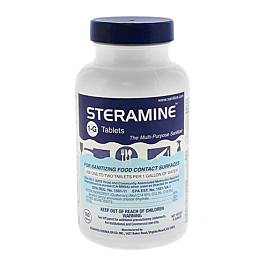Values & Benefits of Library Cooking/Food Programs
Educational Benefits
Health & Wellness
Community Engagement & Social Benefits
Economic & Practical Benefits
Welcome to the Kitchen-in-a-box Community Recipe Book—an evolving collection of simple, creative recipes designed for use with the tools included in the kits. These recipes are shared by library staff across the state so that everyone can benefit from each other’s ideas, programs, and kitchen creativity.
Whether you’re preparing a demonstration, planning a cooking program, or helping patrons explore basic kitchen skills, this recipe book offers quick, reliable options that can be made with minimal equipment. Feel free to browse, adapt, or print any recipe for library programs or take-home activities.
Library Cooking & Food Program Ideas
Healthy Eating & Budget Cooking
Cultural & Historical Food Programs
Hands-On Cooking & Food Science
Literacy & Cooking
Gardening & Sustainability
Family & Kids Cooking Fun
Cooking and Food-Related Program Ideas by Age Group
Kids (Ages 3-7) – Early Literacy & Hands-On Fun
*Focus: Simple, sensory-friendly activities that build basic cooking skills, literacy, and creativity.
Tweens (Ages 8-12) – Hands-On Learning & Food Science
*Focus: Developing independence in the kitchen, STEM learning, and creative exploration.
Teens (Ages 13-18) – Independence & Life Skills
*Focus: Teaching real-world skills, nutrition, and creativity in a fun, social setting.
Adults – Cooking, Budgeting & Cultural Learning
*Focus: Expanding culinary skills, budgeting, health, and cultural appreciation.
Intergenerational & Family Programs
*Focus: Bringing families together to cook, learn, and share experiences.
Other Resources:

Mortar and pestle sets come in various materials like granite, marble, ceramic, and wood, each with unique properties affecting their suitability for different tasks, such as grinding spices or herbs. Depending on the material they are constructed from, changes the levels of porousness and texture. Porcelain ones make better for wet or oily ingredients, while others (like wood) absorb moisture and odor.
Key differences:
Mortar and Pestle Do’s and Don’ts
Do’s
Don’ts
How to Clean a Porous Mortar and Pestle
Daily Cleaning (After Each Use)
Deep Cleaning (For Stains or Strong Odors)
Common Uses for a Mortar and Pestle
Spices & Herbs
Sauces & Dips
Pastes & Seasoning Blends
Other Uses

Dry and liquid measuring cups, while both used for volume measurement, are designed differently: dry cups are for leveling off dry ingredients, while liquid cups are for pouring and measuring liquids, often with a spout and wider shape for ease of use.
Conversion Charts:


Steramine tablets and red disinfectant bucket
Directions for sanitizing tablets

Chlorine test strips
To use chlorine test strips in the kitchen for sanitizing solutions, dip the strip into the solution, remove it immediately, and compare the color of the strip to the color chart on the vial to determine the chlorine concentration.
Extra guidance:
Preparation:
Testing:

Color coded cutting mats
Color-coded cutting mats, like color-coded cutting boards, are used to prevent cross-contamination by assigning specific colors to different food types. As you can see from the illustration on each mat, blue is for seafood, red is for beef, yellow is for chicken, and green is for vegetables.


Silicone Cooking Pinch Grips
Made of high quality food grade materials, these silicone cooking pinch grips have thick heat-resistant insulation padding. They can help you safely hold hot items in the kitchen or by outdoor grill.
